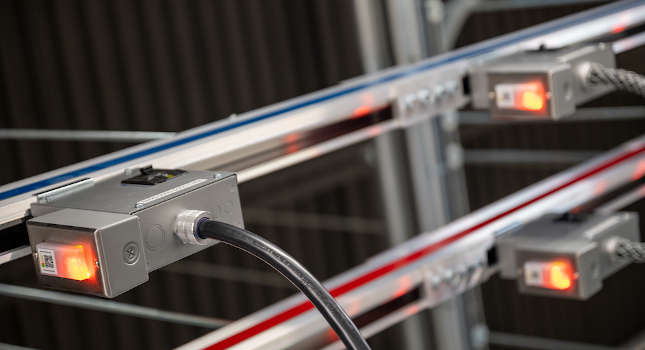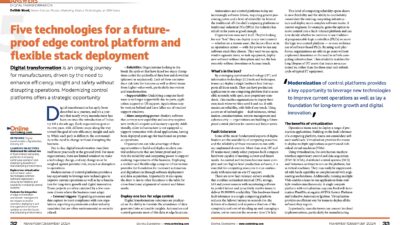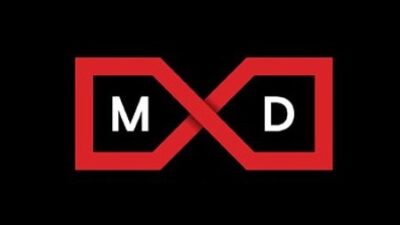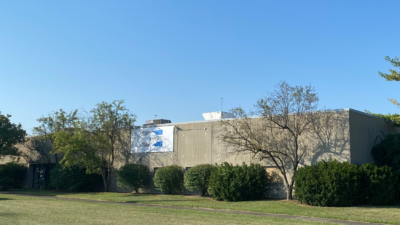Information technology (IT) and operational technology (OT) convergence is enabling a digital manufacturing transformation.

The convergence of IT and OT systems in industrial environments isn’t really a new concept. Indeed, the trends was predicted by Gartner as far back as 2011. However, challenges still face manufacturers looking to upgrade in this way face.
The first challenge is to get these two teams – with different perspectives, strengths, knowledge and priorities – to collaborate seamlessly. While IT teams tend to focus on business data and keeping up with the latest technology, OT teams channel their efforts into manufacturing efficiency and process longevity. Striking a balance to keep both teams satisfied and establish a trusted relationship is a challenge that organizations typically face.
There are also issues surrounding the integrability of devices from each team. For example, industrial sensors collecting data on the factory floor may use a communication protocol that is incompatible with existing IT networks. This challenge requires effort from both sides to standardize all data sources into one uniform format, no matter its source within a business.
Martin Thunman, CEO and co-founder at Crosser, points out the whole premise of Industry 4.0 relies on the convergence of IT and OT systems.
“While each was historically managed in silo by separate teams, on different systems, the importance of capitalizing on the benefits that sensor-rich connected devices bring has highlighted the importance of IT/OT convergence. Across all layers of an organization, streamlining, standardizing and combining systems has been recognized as a key driver of operational efficiency,” he said.
“As the IT/OT convergence is rolled out further, it is possible that the volume of data produced on the factory floor will become too much for the existing IT system’s capacity,” warned Thunman. “Incorporating solutions like edge analytics, which processes the data at the edge of the network to enable real-time actionable insight, can help streamline data and discard irrelevant or invalid values before they are sent to the cloud or other business systems, to prevent the unnecessary scaling of IT systems.”
So, how does the IT/OT convergence translate into real-life benefits for control engineers today? “On a day-to-day basis convergence of IT and OT promises to boost productivity on the factory floor, enable more efficient resource usage, and reduce costs,” continued Thurman. “By uniting OT and IT teams it is possible to benefit from new Industry 4.0 use cases such as condition monitoring, industrial process optimization and asset performance management that rely on the collection and analysis of data from the factory floor to make better informed decisions across other layers of a business.”
Businesses can also benefit from cost reduction. As IT infrastructure is shared among all departments, systems and processes, the data they produce can be managed through one centralized infrastructure. There’s also the opportunity to employ cost saving measures like predictive maintenance.
“IT/OT integration also improves data visibility and interoperability between departments” continued Thurman. “IT/OT convergence relies on the standardization of data at all levels of an organization. all data from top floor software like CRMs and finance apps right down to shop floor sources like machines and enterprise resource planning systems is collected, analyzed and harmonized in the same way, presenting data from each system in a way that is accessible to both teams, enabling continuous interdepartmental workflows across an organization.”
Universal challenges
Many industrial organizations face challenges in building standardized networks that support their entire value chain. The challenge is the same for medium-sized and large companies as well as machine builders and OEMs, who need to meet their customers digitalisation and Industrial Internet of Things (IIoT) requirements.
Jens Geider, portfolio owner Industrial Networks at Siemens AG, there are various possible solutions in the market that support secure OT/IT collaboration. He said: “One is a combined approach based on physical separation between OT and IT using segmentation and firewalls, which could include remote access with central rendezvous servers and optional jump hosts. Another approach provides secure access to OT systems and applications in the production network from any (remote or office) workplace by enhancing the well- established Defense-in-Depth OT security concept with additional Zero Trust principles.”
Siemens supports the transformation process by eliminating complexity and offering easy to manage, secure, future-proof, high-performance and deterministic OT networks which can easily be plugged into existing IT installations. The real-world benefit for today’s control engineer is full transparency and control over processes and data streams, combined with flexibility and security in an fast-changing OT environment. Its totally integrated approach of merging a deterministic network into the world of automation aims to support users and companies and provide them with increasing control over more complex tasks while eliminating complexity, and saving time and resources.
“With the level of digitalisation and progress in this transformation process, site operators will benefit from reduced downtimes, less complexity in dealing with troubleshooting and malfunctions, as well as service personal who are always available – either remotely or on-site and sufficiently skilled in both the OT or the IT world,” continued Geider. “Increasing output, flexibility and transparency while at the same time ensuring reliable operation automatically leads to advantages in the global manufacturing market and gives user more time to focus on what and why they are producing instead of how their processes are maintained.”
Visibility of data
Andy Graham, solutions manager at SolutionsPT, believes the biggest single value-driver that emerges from improved IT/OT convergence concerns the visibility of data to operators and managers. “Once the OT and IT teams are speaking the same language it is possible to extract, see, and use data from operational technologies in new ways to make better decisions,” he said. This can drive productivity and efficiency improvements throughout the organization, especially when that data uses software to contextualize it against other information available from the IT side of the business, such as manufacturing execution system (MES) and enterprise resource planning (ERP) software systems.
“The convergence of IT and OT is central to digital transformation, without it, many of the present and future benefits of DX are not possible. AI, for example, needs clean, accurate and up-to-date information from the plant floor, as does real-time decision making, preventative maintenance, and any number of data-enabled improvements.
“We often focus on the technical capabilities that come from merging these two disciplines, saving costs by optimizing resources such as energy and even space when it comes to data centre and property spend, or improved flexibility when reacting to market trends to name just a few,” continued Graham.
How do these benefits translate to the day-to-day lives of control engineers? An often-overlooked benefit of IT OT convergence is the simplicity it adds when welcoming the new generation of industrial operators. Unlike the issues associated with implementing new technology for the aging workforce, digital natives just entering the sector are well versed and actually expect a high level of digital technology on the factory floor.
An example of this, offered by Graham, is the fact that 13% of millennials are more likely than other age groups to be comfortable around the use of subscription-based tools.
“This reflects their personal lives with the likes of Netflix, Amazon Prime and Spotify and points towards a growing industrial trend, the ‘as-a-service’ approach – which is also opened up by IT/OT convergence,” he explained. Millennials entering decision making positions in OT will be able to utilize this method to deploy a combination of software and hardware that previously wouldn’t be possible because of the initial cost. This opens a pathway to digital transformation that, as well as being implemented from the boardroom, is also being driven by the needs of the plant floor.”
By bringing together the two disciplines of IT and OT, control engineers can be the drivers of digital transformation. IT will provide them with more and better information as well as more and better control. “The complete monitoring and collaboration between disparate systems enables control engineers to complete their job role more efficiently, empowered by real-time, contextualized information made possible by the growth in edge computing capabilities, they can react quickly to issues before they become production stopping events,” explained Graham. “The efficiency benefits also extend to reporting since OT professionals can use automatic auditing available through IT software on the plant floor. This improved, automated information can be used to fulfill compliance and regulatory requirements. With converged IT/OT then, control engineers free up their busy schedules for value-adding work, rather than reacting to issues or completing endless out-dated reporting.”
Graham argues that, by converging IT and OT systems, control engineers can close the gap between cybersecurity and the physical protection needed at the asset level. He said: “The differing needs of IT and OT can be brought together for OT security visibility, this can only be achieved with the insight of IT professionals and OT control engineers. Initiatives being owned by only one side of the line opens up enterprises to potential attacks only made possible by vulnerabilities in OT. Converging IT and OT breaks down the information silos that are commonplace in the industrial environment, it also enables legacy OT hardware to be brought up to the cybersecurity standards of modern IT devices. The same level of authentication that IT incorporates when sending data, making payments, or on-boarding new customers can be applied to the physical systems of OT, further protecting enterprises as they advance in digital transformation.”
Taking responsibility
The responsibility of the control engineer in a converged environment will remain the same. The main difference is that it provides the tools, data, and insight to use existing expertise to make continuous improvements to a process. Control engineers will spend less time recovering from maintenance issues as the real-time monitoring provides the data to react quickly and implement a proactive, and often preventive approach.
“By following the IT best practices the OT systems – whether new or legacy assets – are brought up to the security standards of modern IT equipment, they aren’t experiencing breaches that could negatively impact the business or worses. Added authentication processes protect the data produced by OT systems and close security gaps that have remained prevalent in the industry,” concludes Graham.
In a converged industrial environment control engineers can now work in harmony with IT, each with their own defined roles and responsibilities but working towards a common goal – a protected and efficient enterprise that can make use of all the capabilities that digital transformation offers today and also those that may come in the future.
– This originally appeared on Control Engineering Europe’s website. Edited by Chris Vavra, web content manager, Control Engineering, CFE Media and Technology, [email protected].


